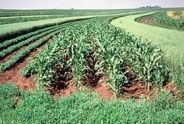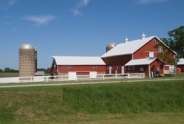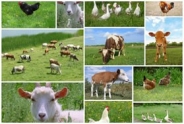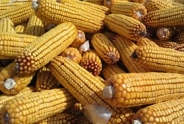Best Management Practices for Field Biosecurity
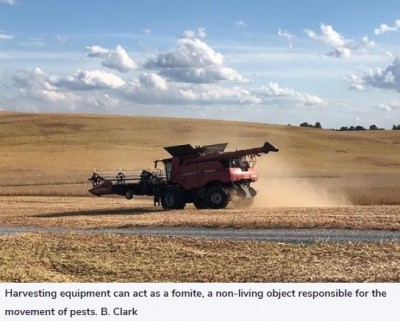
By Alyssa Collins, Penn State Extension
As producers, we are already familiar with native and exotic crop pests that can cause significant economic losses through reductions in crop or forage yield, impacts on harvestability, impacts on quality, and the costs of inputs required for pest management.
To reduce the likelihood of introducing new pests to the farm, it is recommended that producers develop a biosecurity plan for their operation. Those that have an animal enterprise on the farm are likely already familiar with biosecurity procedures implemented to reduce the spread of animal diseases and pests - the same basic principles can also be applied to our crop and forage fields. Implementation of biosecurity procedures may reduce the likelihood of pest introductions and can limit their potential spread among multiple crops or fields in your operation.
Movement of PestsTransmission methods of pests includes movement via fomites, vectors, other living organisms, air currents, and water movement/irrigation.
Fomite transmission involves the movement of plant diseases or pests by inanimate objects. Planting, tillage, and harvesting equipment would be an example of potential fomites responsible for field to field movement of pests.
In soybeans, the pathogen responsible for white mold forms small, hard lumps of fungus that can be moved from field to field in tire treads, on tillage implements, and even in combines.
Vectors are living organisms (such as insects) that can carry and transmit pathogens to our crops and forages, usually during feeding activity. Other living organisms can also carry pests on their physical form, and these may be introduced incidentally (for example introduction of weed seeds by birds or other wildlife). One of the diseases that affect barley and wheat, barley yellow dwarf, is caused by a virus that is transmitted from infected to healthy plants by aphids when they feed.
Airborne transmission may include the transportation of insects and diseases traveling via air currents. Waterborne transmission can occur due to impacted irrigation sources/equipment or by incidental surface runoff from contaminated fields. Several of the rust diseases that can be found in corn, soybean, and small grain crops move in weather systems from southern regions where the pathogens overwinter to our fields in Pennsylvania.
Plan DevelopmentBiosecurity plan development should involve all farm partners and employees. The plan should be available in writing, understandable to all, and should also be reviewed and updated annually to remain current. Effective plans are utilized by everyone, everyday and enforced to mitigate the potential movement of pests as described above.
General Recommendations- Require all employees and staff to read your biosecurity plan. Make the plan readily available by filing a copy in a known location accessible by all employees and staff.
- Diversify the operation to avoid uniform susceptibility by planting multiple crop species and/or varieties.
- Purchase certified seed free of diseases and weeds.
- Become aware of potential diseases and pests in your region, and scout fields regularly.
- Report any unusual plant diseases or pests to your local Extension educator or to the Pennsylvania Department of Agriculture.
- Post signs advising visitors of biosecure areas, and who to contact for entry permission.
- Limit access of property to certain areas through fencing or gated entry sites.
- Lock gates and buildings when not in use.
- Have designated (preferably paved) areas for vehicles to park that have visited other farms or agricultural sites.
- Vehicles arriving from other agricultural sites should be cleaned before allowing movement into fields. This includes mud and plant debris on vehicles and equipment.
- When traveling from properties with known disease or pest issues you may consider washing your hands, fully showering, and changing clothes. Disposable boot covers or multiple pairs of shoes can limit transmission.
- Consider performing field operations (tillage, spraying, harvesting) in areas with known pest issues only after performing those operations in "clean" fields first, to avoid transmitting any organisms to new fields.
- Properly contain plant material showing unusual symptoms or signs during transportation or mailing.
These best management practices above can be used to develop a biosecurity plan for your operation. Planning will allow you to determine the measures needed to implement a comprehensive biosecurity program to protect your facility and fields in the best way possible. For additional recommendations for developing a biosecurity plan specific to your operation, we encourage you to contact your local Extension educator.
Upcoming Events
Memoir Reading: Barn Gothic
December 4, 2025
Bath, NY
Barn Gothic is an elegy for family farmers and an intimate portrait of three generations laboring to be fathers and sons while their livelihood falls apart. Beautifully told with a farmer's restraint and a poet's grace, it is a story of personal loss amid corporate corruption and of finding a way forward when everything you know disappears.
NY Small Farms Summit 2025: Stronger Together
December 5, 2025
Alfred, NY
We hope you will join us on December 5th for the 2025 New York Small Farms Summit! This is an opportunity to meet other farmers and ag supporters, learn about research and education projects, and set priorities for future efforts to grow small farm success.
At the Allegany County site, we will focus on giving trees a chance and how trees build resiliency on small farms. Whether attracted to fruit, nuts, vegetables, fodder or shade, trees can be an integral part of a successful farming system. Join us as we explore the opportunities for resiliency that come from adding tree crops or managing wooded areas of your farm for agroforestry or silvopasture systems.
Crops, Cows & Critters - Southwest New York Dairy, Livestock & Field Crops Newsletter Sponsorship
December 19, 2025
Our two forms of publications feature research-based and timely information from our four specialists, listed to the right, along with local event notifications and Cornell University outreach. This information is provided to participants who range from dairy, livestock, and field crops producers to agricultural suppliers and consultants.
Weekly Email Update: Shared with 625+ households who have signed up with our program.
Monthly Paper Mailer: To reach our stakeholders and farmers who lack internet access, we send out a monthly mailer where your company's logo and contact information would be featured with a mailing list of 330+ households.
If you sponsor our weekly and monthly publications you reach approximately 955 households.
Visit our website to view our newsletters!
Announcements
No announcements at this time.

